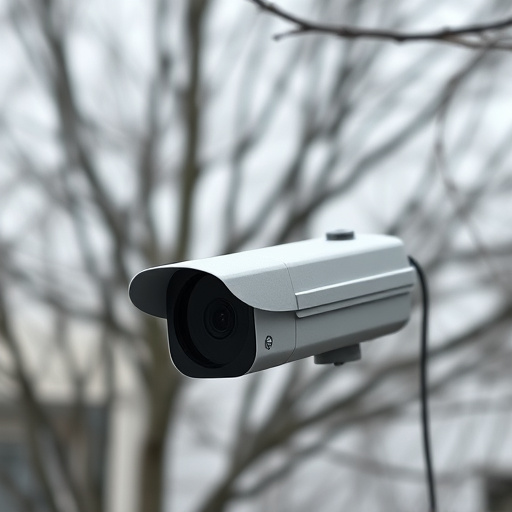Disguised cameras, though useful for legitimate security purposes, pose significant privacy risks if used unauthorized. Homeowners can protect themselves by conducting regular inspections and using RF detectors to identify hidden cameras in their homes. Security professionals employ a multi-faceted approach combining RF detection, visual inspection, and sound detection to combat covert surveillance devices. Ethical use of RF detectors requires understanding local laws and obtaining consent, respecting individual privacy while enhancing home protection against hidden threats.
Discover the insidious world of disguised cameras and safeguard your home environment with our comprehensive guide. Understanding how these hidden devices operate is crucial for identifying potential risks lurking within your sanctuary. This tutorial delves into the significance of radio frequency (RF) detector sweeps, a powerful tool to uncover covert surveillance equipment. Learn why RF signals are essential in securing your privacy, explore practical tools and techniques, and navigate the ethical and legal aspects of employing this cutting-edge home protection measure.
- Understanding Disguised Cameras: Unveiling Hidden Risks
- Why Detect RF Signals? Securing Your Home Environment
- Tools and Techniques: Uncovering Hidden Cameras
- Ethical Considerations and Legal Aspects of RF Detector Use
Understanding Disguised Cameras: Unveiling Hidden Risks
Disguised cameras, often referred to as hidden cameras, are a growing concern in today’s digital era. These tiny devices can be easily concealed in everyday objects like clocks, smoke detectors, or even doorbells, making them nearly impossible to spot. While they serve various purposes, including home protection and surveillance, their unauthorized use poses significant risks. When used without consent, hidden cameras invade privacy, capturing sensitive information and personal moments that should remain private.
In the context of home protection, understanding the presence of disguised cameras is crucial. Homeowners should be vigilant and regularly inspect their surroundings for any signs of these devices. Investing in a reliable RF (Radio Frequency) detector can aid in sweeping for hidden cameras, ensuring a safer and more secure living environment. By staying proactive and informed, individuals can protect their privacy and prevent potential security breaches.
Why Detect RF Signals? Securing Your Home Environment
Detecting RF (Radio Frequency) signals is a powerful tool in securing your home environment, especially when it comes to uncovering hidden cameras or surveillance devices. These devices often operate on specific RF frequencies, making them detectable with the right equipment. By using an RF detector sweep, you can actively search for and identify disguised cameras that might be covertly monitoring your space.
RF signal detection is a proactive measure to ensure your home protection. Many hidden cameras emit or listen to radio frequency signals as part of their data transmission process. By understanding this technology, homeowners can stay one step ahead of potential intruders. This practice is particularly relevant in today’s digital era where advanced, yet covert surveillance techniques are readily available for malicious purposes. Securing against disguised cameras for home protection is a significant aspect of maintaining privacy and safety.
Tools and Techniques: Uncovering Hidden Cameras
When it comes to detecting disguised cameras, also known as hidden surveillance devices used for home protection, security professionals rely on a combination of specialized tools and techniques. One of the primary tools is the RF (Radio Frequency) detector. These devices emit signals that can disrupt or detect the wireless transmission of footage from hidden cameras, making them an effective countermeasure against covert surveillance.
In addition to RF detectors, experts often employ visual inspection methods, using infrared cameras and thermal imaging technology to uncover heat signatures indicative of camera lenses. They also utilize sound detection tools, as some cameras produce faint audio signals during operation. Combining these techniques allows for a comprehensive approach to identifying and neutralizing hidden cameras, ensuring enhanced home security against unwanted surveillance.
Ethical Considerations and Legal Aspects of RF Detector Use
When using a radio frequency (RF) detector to sweep for hidden cameras, it’s crucial to consider the ethical and legal implications. Disguised cameras, while serving as tools for home protection, can invade privacy if not used responsibly. It’s essential to understand local laws regarding surveillance technology and obtain consent before monitoring private spaces, especially in public areas or shared living environments.
The RF detector itself is a non-intrusive tool, but its use should be guided by principles of transparency and respect for individual privacy rights. Users must ensure they are not violating any laws or infringing on others’ personal freedoms. Being aware of these considerations ensures the ethical deployment of technology in everyday life, especially when it comes to protecting one’s home from potential hidden threats like disguised cameras.
In the quest for securing our home environments, understanding the risks posed by disguised cameras is paramount. The article has explored the intricacies of hidden cameras, their potential threats, and the role of RF signal detection as a powerful tool in identifying them. By employing techniques discussed, such as RF detector sweeps, individuals can take proactive measures to safeguard their privacy and protect their homes from covert surveillance. While ethical considerations and legal aspects must be navigated, the benefits of enhancing home security through RF technology are undeniable, offering peace of mind in today’s digital age.
